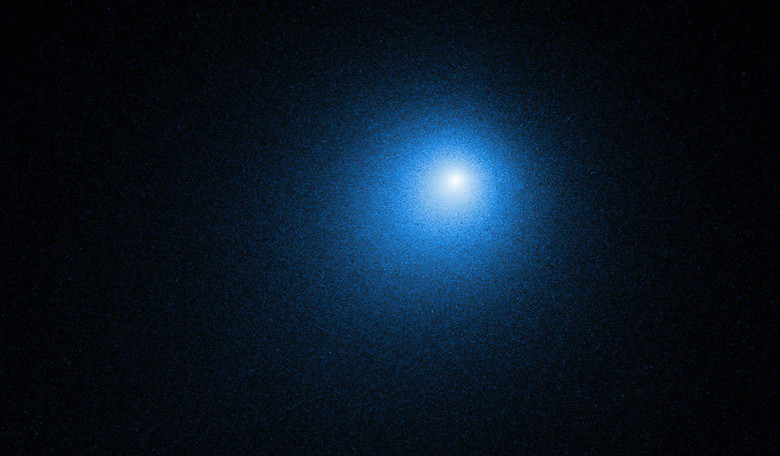As the years most brightest comet streaked across the sky, NASA telescopes caught it on camera from multiple angles. Comet 46P/Wirtanen is a short-period comet with an orbital period of 5.4 years and it has been whizzing through the inner solar system, approaching Earth’s vicinity at a speed of about ten kilometres per second (six miles per second). The comet is relatively small in size with an estimated diameter of just 1.2 kilometres.
The icy space rock was the original target for ESA’s Rosetta spacecraft but the launch window was missed so 67P/Churymov-Gerasimenko became the missions target in the end.
NASA’s Hubble Space Telescope photographed comet 46P/Wirtanen on 13 December when the comet was 12 million kilometres (7.4 million miles) from Earth. In the visible-light image above, the comet’s nucleus is hidden in the center of a fuzzy glow from the comet’s coma.
The coma is a cloud of gas and dust that the comet has ejected during its pass through the inner solar system due to heating from the Sun. To make this composite image, the color blue was applied to high-resolution grayscale exposures acquired from the spacecraft’s Wide Field Camera 3 (WFC3) instrument.
The inner part of a comet’s coma is normally not accessible from Earth. The close flyby of comet 46P/Wirtanen allowed astronomers to study it in detail. They combined the unique capabilities of Hubble, NASA’s Chandra X-ray Observatory and the Neil Gehrels Swift Observatory to study how gases are released from the nucleus, what the comet’s ices are composed of, and how gas in the coma is chemically altered by sunlight and solar radiation.
Although comet 46P/Wirtanen is particularly bright – at its current perihelion passage, it is the brightest it has ever been and is likely to be – it is just about visible with the naked eye if observed from a dark skies location on Earth. It is therefore best to view the comet through binoculars or a telescope.
Backyard observers can currently find the comet near the constellation Taurus though the added light from the Moon makes for challenging observing conditions. However the comet is still speeding through the sky and will be detectable in the weeks to come when the full moon passes. Finder charts and other information are available at the Comet Wirtanen Observing Campaign website.











